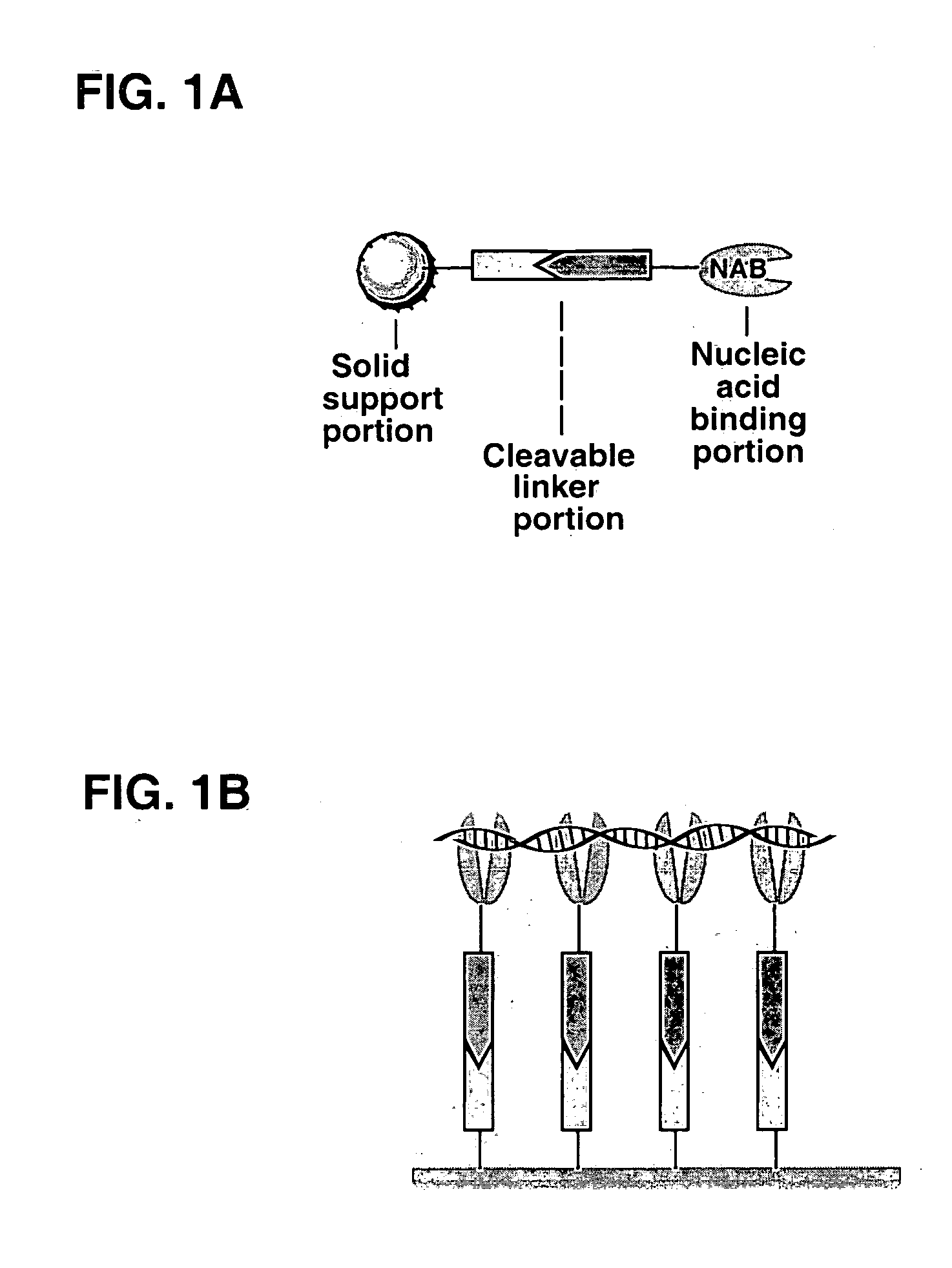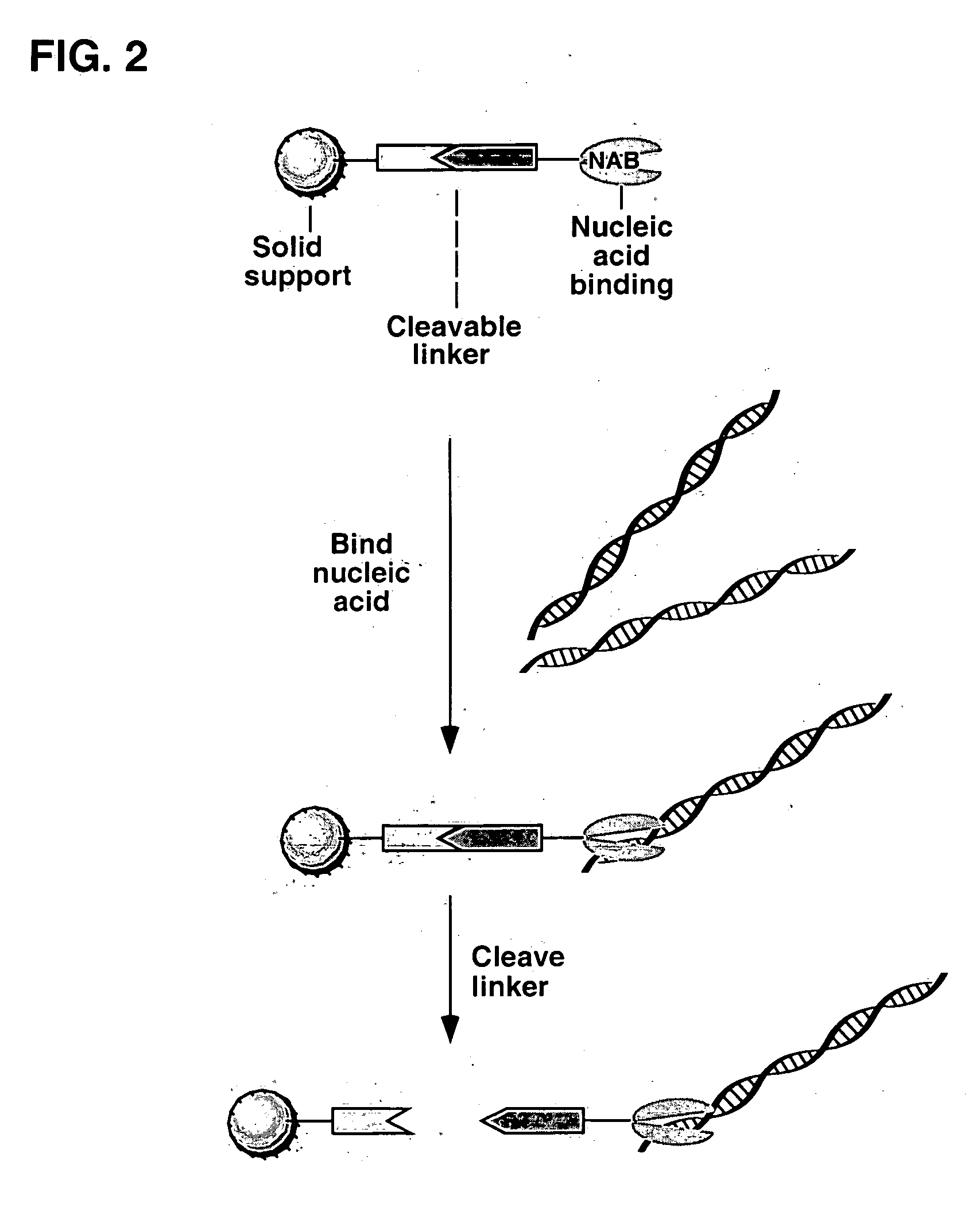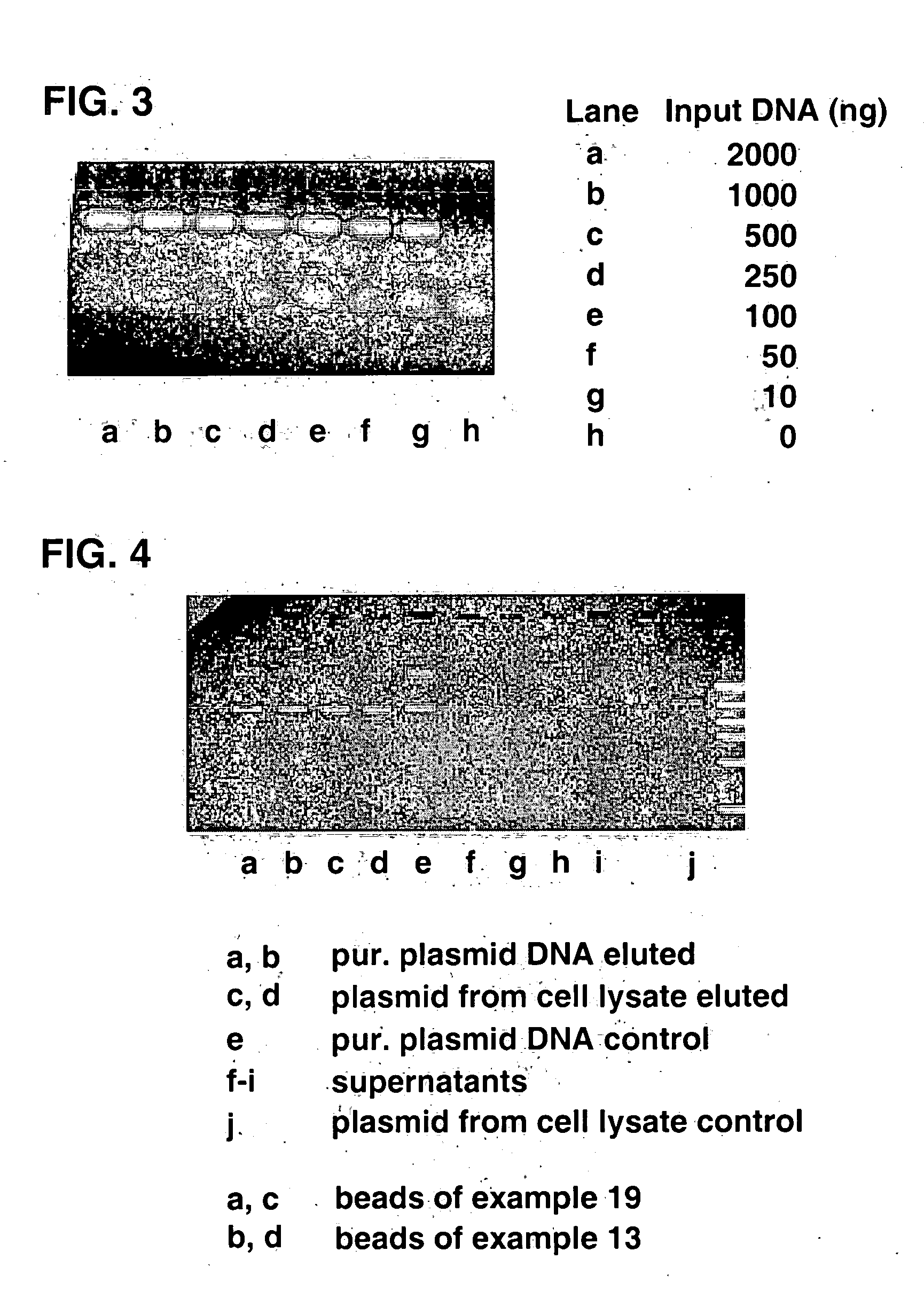Methods of using cleavable solid phases for isolating nucleic acids
a solid phase and nucleic acid technology, applied in the direction of sugar derivatives, biochemistry apparatus and processes, organic chemistry, etc., can solve the problems of difficult to obtain substantially free target nucleic acids for molecular biological applications, undesirable long-chain alkyl groups
- Summary
- Abstract
- Description
- Claims
- Application Information
AI Technical Summary
Problems solved by technology
Method used
Image
Examples
example 1
Synthesis of a Polystyrene Polymer Containing Tributylphosphonium Groups
[0136]
[0137] Merrifield peptide resin (Sigma, 1.1 meq / g, 20.0 g) which is a crosslinked chloromethylated polystyrene was stirred in 200 mL of CH2Cl2 / DMF (50 / 50) under an argon pad. An excess of tributylphosphine (48.1 g, 10 equivalents) was added and the slurry was stirred at room temperature for 7 days. The slurry was filtered and the resulting solids were washed twice with 200 mL of CH2Cl2. The resin was dried under vacuum (21.5 g). Elemental Analysis: Found P 2.52%, Cl 3.08%; Expected P 2.79%, Cl 3.19%: P / Cl ratio is 0.94.
example 2
Synthesis of a Polystyrene Polymer Containing Trioctylphosphonium Groups
[0138]
[0139] Merrifield peptide resin (Sigma, 1.1 meq / g, 20.0 g) was stirred in 200 mL of CH2Cl2 / DMF (50 / 50) under an argon pad. An excess of trioctylphosphine (92.4 g, 10 equivalents) was added and the slurry was stirred at room temperature for 7 days. The slurry was filtered and the resulting solids were washed 3 times with 200 mL of CH2Cl2. The resin was dried under vacuum (21.3 g). Elemental Analysis: Found P 2.28%, Cl 2.77%; Expected P 2.77%, Cl 2.42%: P / Cl ratio is 0.94.
example 3
Synthesis of a Polystyrene Polymer Containing Trimethylphosphonium Groups
[0140]
[0141] Merrifield peptide resin (ICN Biomedical, 1.6 meq / g, 5.0 g) was stirred in 50 mL of CH2Cl2 under an argon pad. A 1.0 M solution of trimethyl phosphine in THF (Aldrich, 12 mL) was added and the slurry was stirred at room temperature for 7 days. An additional 100 mL of CH2Cl2 and 1.2 mL of the 1.0 M solution of trimethyl phosphine in THF was added and the slurry was stirred for 3 days. The slurry was filtered and the resulting solids were washed with 125 mL of CH2Cl2 followed by 375 mL of methanol. The resin was dried under vacuum (5 g). The resin was ground to a fine powder prior to use.
PUM
| Property | Measurement | Unit |
|---|---|---|
| Volume | aaaaa | aaaaa |
| Volume | aaaaa | aaaaa |
| Molar density | aaaaa | aaaaa |
Abstract
Description
Claims
Application Information
 Login to View More
Login to View More - R&D
- Intellectual Property
- Life Sciences
- Materials
- Tech Scout
- Unparalleled Data Quality
- Higher Quality Content
- 60% Fewer Hallucinations
Browse by: Latest US Patents, China's latest patents, Technical Efficacy Thesaurus, Application Domain, Technology Topic, Popular Technical Reports.
© 2025 PatSnap. All rights reserved.Legal|Privacy policy|Modern Slavery Act Transparency Statement|Sitemap|About US| Contact US: help@patsnap.com



